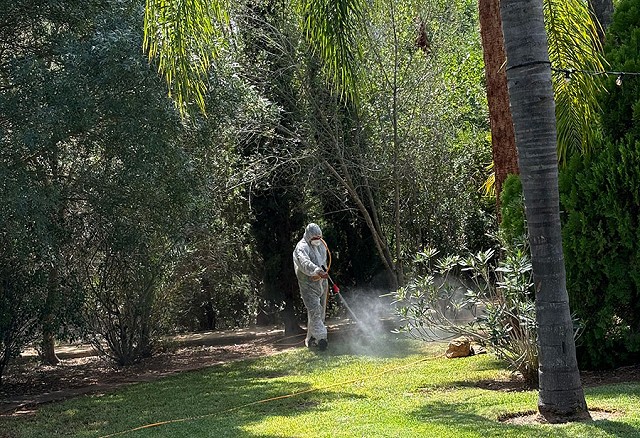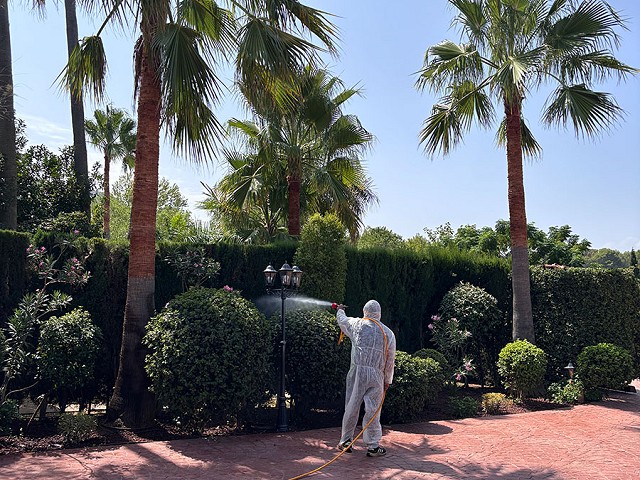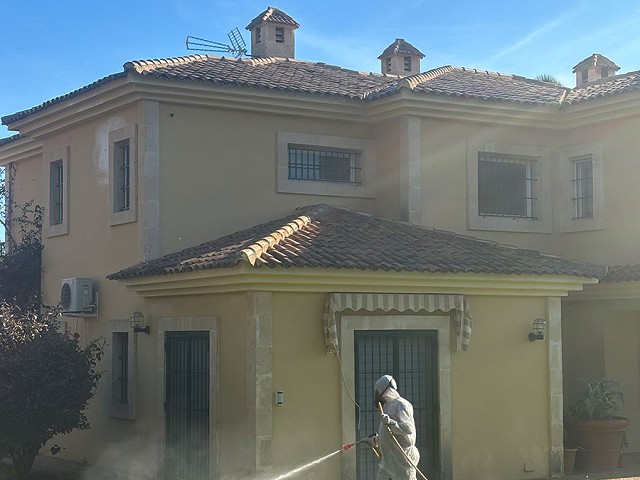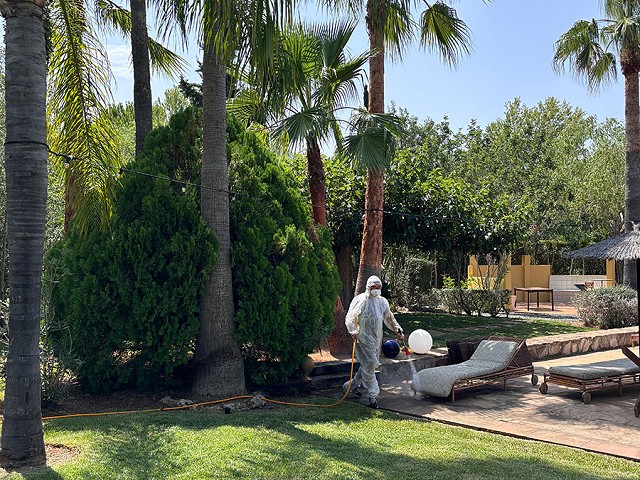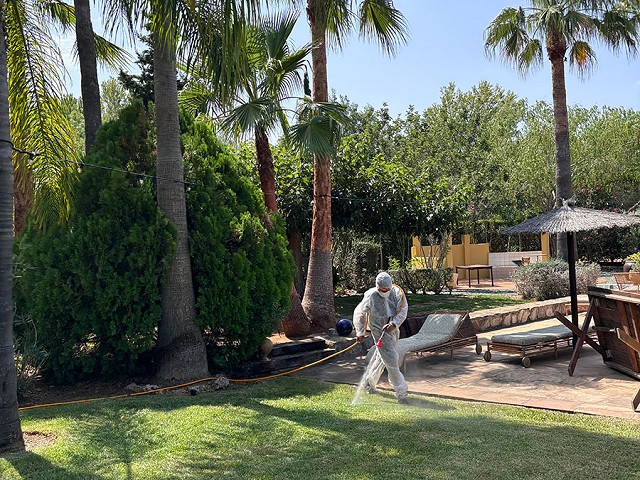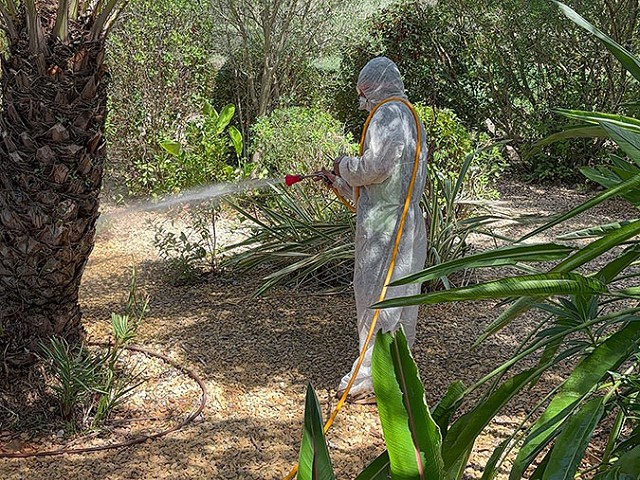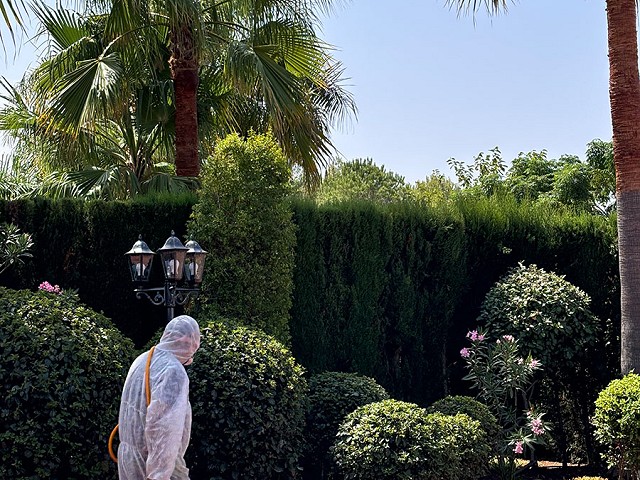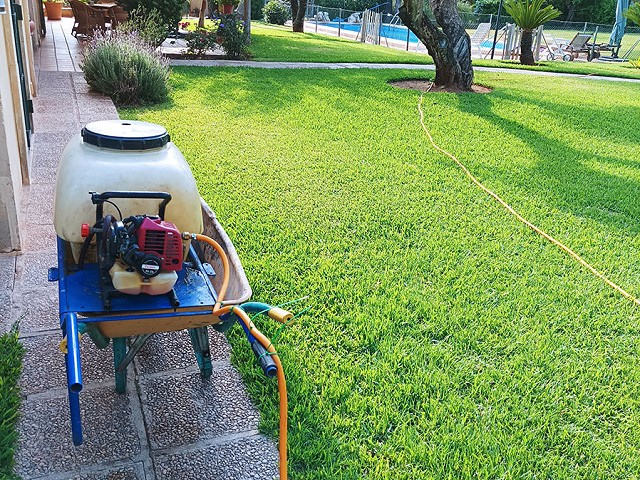Phytopathology and pest control with sustainable approach
At EGASA Landscaping and Gardening, we approach plant pathology and pest control with a comprehensive and sustainable approach, prioritising the health of your plants and the safety of your environment. Our service includes accurate diagnosis and implementation of effective solutions, with special attention to mosquito control and common lawn diseases.
Pest control: focus on mosquitoes
The proliferation of mosquitoes can seriously compromise the enjoyment of your garden. At EGASA Landscaping and Gardening, we implement control strategies that combine habitat management with selective treatments:
- Identification of key species: in Spain, the most common and nuisance species include the common mosquito (Culex pipiens) and the tiger mosquito (Aedes albopictus). Culex pipiens is ubiquitous and active mainly in the evening and at night, while Aedes albopictus, an invasive species, is aggressive during the day and can transmit diseases.
- Management of breeding sites: the most effective measure is the elimination of stagnant water points, however small (flower pot dishes, buckets, drains, etc.), where mosquitoes lay their eggs.
- Biological treatments: we use biological larvicides based on Bacillus thuringiensis israelensis (Bti), a micro-organism that selectively affects mosquito larvae without harming other organisms or the environment.
- Adulticide treatments (selective): in cases of high infestation, we apply adulticide treatments with products with low environmental impact and in a localised manner, prioritising the safety of people and pets.
Phytopathology and lawn diseases: diagnosis and solutions
Lawns are susceptible to various diseases caused mainly by fungi, which can seriously deteriorate their appearance and health. At EGASA Landscaping and Gardening, we carry out an accurate diagnosis and apply specific treatments:
- Identification of common diseases:
- Brown spot (Rhizoctonia solani): characterised by circular or irregular patches of brown or straw-coloured grass, which thrives in hot conditions and high humidity.
- Red thread (Laetisaria fuciformis): reddish or pinkish spots with filaments appearing on leaves, often associated with nitrogen deficiencies and high humidity.
- Dollar spot (Sclerotinia homoeocarpa): small, circular, coin-sized, sunken spots with brown or straw-coloured edges, which may coalesce over larger areas.
- Fusarium (Fusarium spp.): may occur as brown patches with pinkish-whitish mycelium (Microdochium Patch) in cool, humid conditions, or as dry, yellowish patches in summer.
- Pythium (Pythium spp.): greasy, water-soaked spots that turn brown quickly, very aggressive in warm, humid conditions.
- Powdery mildew: white or greyish powdery coating on the leaves, indicating poor ventilation and excess humidity.
- Analysis and diagnosis: Our experts carry out an assessment of the turf, considering factors such as grass type, climatic conditions, soil drainage, irrigation and fertilisation practices.
- Control strategies: We implement specific fungicide treatments when necessary, complemented by improvements in cultural management (aeration, scarifying, adjustment of irrigation and fertilisation, appropriate mowing) to strengthen the turf's natural resistance and prevent future occurrences. We prioritise solutions that minimise environmental impact.
Our expertise in plant pathology and pest control allows us to protect your garden effectively and sustainably, ensuring the health and vigour of all your plants.
